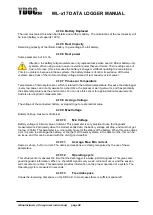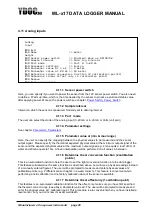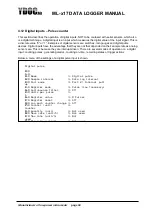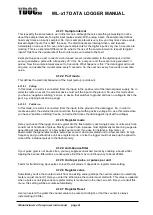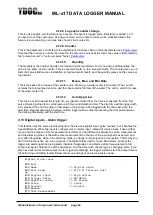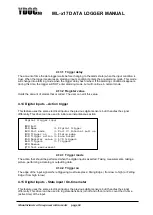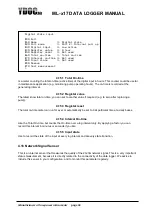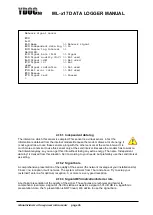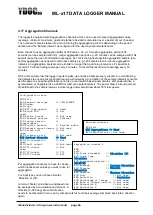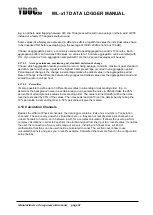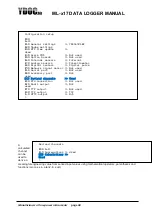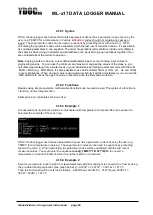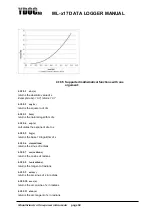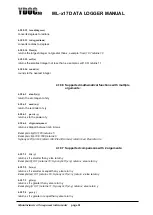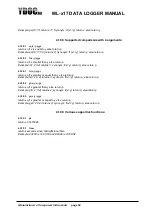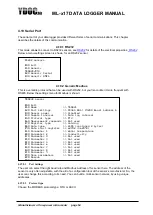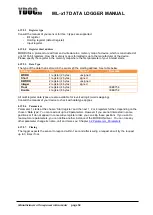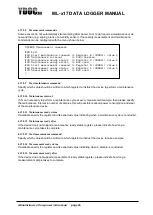
ML-x17 DATA LOGGER MANUAL
Manufacturers of low power instruments
page 40
4.12 Digital inputs
– Pulse counter
This section describes the operation of digital inputs, NOT to be confused with serial sensors, which also
is a digital technique. A digital input is an input which measures the digital value of the input signal. This is
a discrete value “0” or “1”. Examples of digital sensors are: switches, rain gauges and digital pulse
devices. Digital inputs have the advantage that they are not that depended on their sample rate as analog
sensors are. This is because they are interrupt-driven. There are several modes of operation on a digital
input: counting pulses, generating alarms, counting on-time, recording states or trigger actions.
Below, a menu of the settings of a digital pulse input is shown.
Digital pulse
[0]
Exit
[1] Name >> Digital pulse
[2] Sample interval >> Data log interval
[3] Port mode >> Port 2; Internal pull
up
[4] Register mode >> Pulse (low frequency)
[6] Anti-bounce filter >> Off
[5] Units per pulse >>
1
[6] Register value >> 0 Pulses
[7] Register reset >> Off
[8] Log each counter change >> Off
[9] Counter (unit) >>
Counter
[A] Quantity (unit) >> Not used
[B] Mean rate (unit/h) >> Not used
[C] Max rate (unit/h) >> Not
used
[D] Min rate (unit/h) >> Not used
[E] Activity period >> Water intake period
[F] Activity end detection >>
00:00:04
[R] Remove
[T] Test measurement
>













